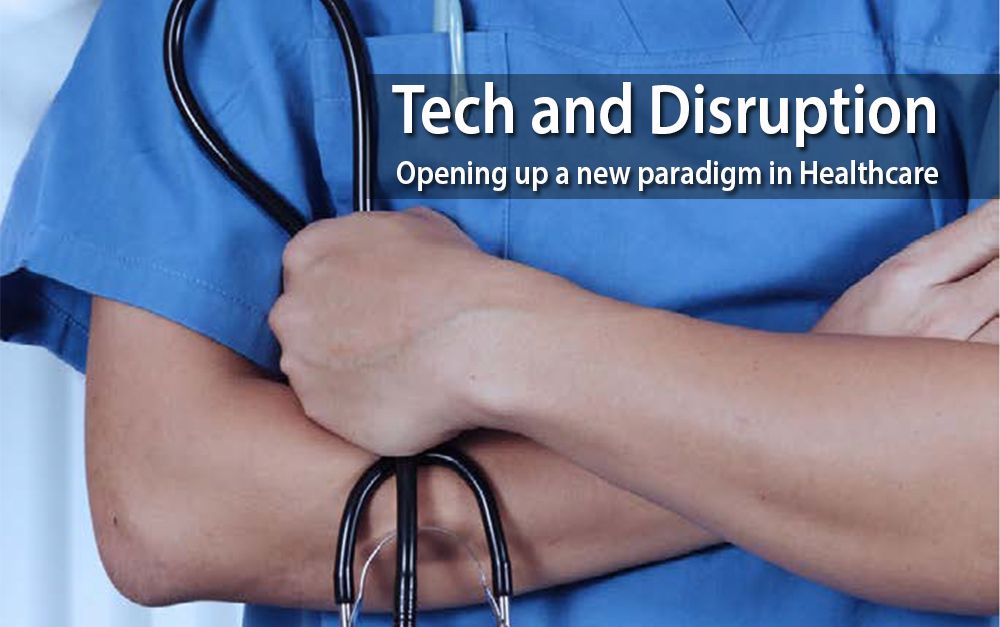Mr. Swadeep Srivastava, Founder & Managing Partner India, India Virtual Hospital is a seasoned healthcare professional with over 20 years of real on ground experience in the Indian healthcare space.Before taking the entrepreneurial plunge, Swadeep was a successful Chief PRO of India’s largest Corporate Hospital — Indraprastha Apollo and has a significant role in building the brand since its inception. In the year 2000, he founded country’s 1st ‘Healthcare Public Relations company, ViaMedia Health, which went on to become the largest ‘Healthcare Communications’ firm in India.
Known as a Patient’s Guide in his circle, Swadeep is a strong advocate of growing value-based care environment in India, which has cutting-edge but simple-to-use technologies for patients, physicians and health systems to improve outcomes.
One of my close relatives was suffering from Multiple Myeloma Cancer, which was diagnosed at a super specialty hospital in Delhi and the course of treatment was suggested. Since, I have been in the healthcare arena for about two decades, I was asked to arrange for a second opinion from a reputed government oncologist. While the diagnosis was correct, the course of treatment suggested by this government specialist was quite different creating a bit of apprehension and panic. Since, time was running out and the obvious choice for third opinion was Tata Memorial Centre, I logged on to Navya, which offers an expert decision service in oncology in association with Tata Memorial Centre. By simply uploading some of the medical case reports, Navya offered us evidence based expert decision on the course of treatment, which was in sync with the second opinion offered. The treatment started on time and the relative is doing fine. By click of a button, we could get the advice from one of the best institutions of oncology sitting thousands of miles away.
Welcome to the world of ‘Tech and Disruption’
Healthcare as we know today is undergoing many exciting transformations. For instance, the surgeon may no longer have to depend only on his skills or eyesight or even a computer screen to do complicated surgeries. He can take the help of the da Vinci Surgical System, which os a 3D high definition vision system with tiny wristed instruments that rotate and bend at angles not possible by the human hand. The end result: far greater accuracy and precision in the surgeon’s work. Then there is the exo skeleton, which has now begun helping paralysed people to walk again. And then there are the healthcare aggregators who are bringing various services to patients at the click of a button, and too, to the comfort of their homes. For instance, a person suffering from extreme pain of the lower back and is unable to go to a hospital to take treatment can now book for a physiotherapist to visit his house and give him/her physiotherapy sessions. Sites such as Practo, DocEngage and Lybrate, among others, bring this and many other services to patients at their homes. Similarly, our IVH app is facilitating the whole patient journey and empowering patient from decision making to surgery to recovery process in a transparent and unbiased way.
Internet-of-Things (IOT) is another technology which has begun revolutionising healthcare. Consider the pacemaker. With the IOT, it will be possible to track its functioning and take medical advice at the required time before things go out of hand. And for the exercise conscious ones, they can count the number of steps they walk in a day through an app on the iPhone or other Android phones. This is especially helpful to those who set a target per day. So, the treadmill will not be as sought after, say, in three years from now, as it is now, because that simple app on your phone calculates the number of steps you have walked during the past 24 hours, the and calories shelved.
So, how far can all this go? Consider the Origami robot. This tiny robot placed in a capsule is swallowed by a patient. In the stomach, the capsule dissolves and the Origami robot begins its job. It can remove unwanted items, such as coins or pins from the stomach, and patch up wounds on the stomach lining, all the while being controlled by a technical expert. So, going forward, would it fanciful to think that humans could be imbedded with a chip which would measure all their vital parameters on 24×7-basis and the chip would send out an alert to a medical expert should any of the parameters show signs of going askew? That would be 24×7 medical diagnoses for you by a chip through the IOT!
Want to write for InnoHEALTH? send us your article at magazine@innovatiocuris.com
Read all the issues of InnoHEALTH magazine:
InnoHEALTH Volume 1 Issue 1 (July to September 2016) – https://goo.gl/iWAwN2
InnoHEALTH Volume 1 Issue 2 (October to December 2016) – https://goo.gl/4GGMJz
InnoHEALTH Volume 2 Issue 1 (January to March 2017) – https://goo.gl/DEyKnw
InnoHEALTH Volume 2 Issue 2 (April to June 2017) – https://goo.gl/Nv3eev
InnoHEALTH Volume 2 Issue 3 (July to September 2017) – https://goo.gl/MCVjd6
InnoHEALTH Volume 2 Issue 4 (October to December 2017) – http://amzn.to/2B2UMLw
Connect with InnovatioCuris on:
Facebook: https://www.facebook.com/innovatiocuris
Twitter: https://twitter.com/innovatiocuris
LinkedIn: https://www.linkedin.com/groups/7043791
Stay updated about IC, visit: www.innovatiocuris.com

